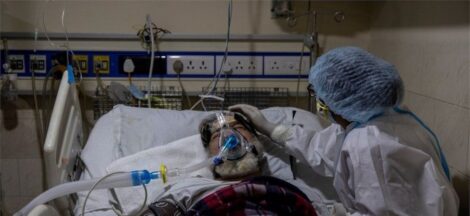By Dr Arun Mitra
For the last several years dense smog engulfs large part of north India, including Punjab, Haryana, western UP, parts of Rajasthan, Himachal Pradesh and NCR Delhi. This happens during the months of October and November when summer has ended and winter is about to set in. During the summer season the air tends to go up in the atmosphere. But during October and November because of fall in temperature the particles do not rise, but get suspended and mix with the vapours. Source of these particles are mainly vehicular emissions, industrial effluents and smoke coming out of burning of paddy straw in the fields. Low wind speed during this period and dry weather aggravate the problem.
As a result there is a drop in the air quality some times to dangerous levels. Air quality is measured as Air Quality Index (AQI). As per the Environmental Protection Agency (US), the AQI is calculated on the basis of five major pollutants – the ground level ozone, particulate matter, carbon monoxide, sulphur dioxide and nitrogen dioxide. The AQI levels have been graded in the range of 0-500. AQI level from 0-50 are satisfactory and pose little or no risk. Moderate AQI is from 51-100. This poses risk to a very small number of people, particularly those who are sensitive to ozone. The levels from 101-150 can be harmful to persons who are already suffering from respiratory problems or heart diseases; children and elderly are at higher risk. From 151-200 are unhealthy levels for every citizen while the sensitive groups may experience more serious effects. Levels between 201and 300 are health alert for more serious effects. AQI levels beyond 300 are an emergency situation. In this context the levels which went up to 999 in the Punjabi Bagh area of Delhi on 8th November 2017 is a cause of extreme concern.
Smog causes a feeling of suffocation, which occurs due to relative lowering of oxygen level in the surrounding air. The pollutants in the smog can irritate respiratory system, causing coughing, feeling of irritation in throat. One may experience an uncomfortable sensation in chest. The ozone in the smog can reduce lung functions and make it more difficult to breathe deeply and vigorously. There is aggravation of asthma, which may require medication. Ozone makes people more sensitive to allergens, which are the most common triggers for asthma attacks.
Ozone may aggravate chronic lung diseases such as emphysema and bronchitis and reduce the immune system’s ability to fight off bacterial infections in the respiratory system. Repeated short-term ozone damage to children’s developing lungs may lead to reduced lung function in adulthood.
Particulate matter includes microscopic particles and tiny droplets of liquid. Because of their small size, these particles are not stopped in the nose and upper lungs by the body’s natural defences but go deep into the lungs, where they may become trapped and cause irritation. Exposure to particulate matter can cause wheezing and similar symptoms in people with asthma or sensitive airways. Particulate matter can serve as a vector for toxic air pollutants. Carbon monoxide affects oxygenation of hemoglobin by forming carboxy hemoglobin.
As a result of all these there is loss of mandays because the working capacity of people goes down. Children are not able to attend schools. Since the medical advisory is to avoid outdoor activity, the productivity falls. In addition, the health problems are aggravated as a result of accidents.
Every year when the smog level goes high, there is debate on the issue but it dies down after some time. Urgent remedial measures have to be taken. Industry needs to be regulated firmly to reduce the effluents. Vehicular emissions have to be brought down, paddy straw burning needs to be checked. It is not correct to put the whole blame on farmers without addressing their grievances.
The time gap between harvesting of paddy and sowing of wheat crop is less. Therefore, the easiest method the farmers find is to burn the straw and then plough the field for the next crop even though the high temperature over the soil because of burning of straw residue destroys useful microorganisms, causing huge loss of nitrogen, phosphorous, potash and many beneficial micro nutrients. As per estimates, there is loss of macro and micro nutrients to the tune of Rs.1,000 crores in Punjab alone per year due to burning of wheat and paddy straw. The paddy cultivable area in Punjab is about 65 lakh acres. On an average there is 30 quintal of yield per acre, which means 19.50 crore quintal of paddy is produced in the state. As per the NGT guidelines, different agricultural machinery required for management of straw in the state costs around Rs1,600 crores. It is not possible for small and marginal farmers to purchase such machinery.
The farmers have a feeling that by delaying the sowing of the next crop they are losing money due to reduced yields. Therefore, if farmers are given bonus of Rs.100 per quintal, which will cost the government around Rs2,000 crores, there is a possibility that farmers could be convinced to shun this practice. Many young farmers are now concerned about the fertility of the soil as well as the health effects of the smoke. The state and the central governments should share this responsibility. The overall cost has to be evaluated with the health cost borne by the people, which could be much higher because it involves cost on disease, loss of mandays, loss of production, loss of schooling and mental stress. (IPA Service)
The post Smog: Time To Act And Save Health Is Now appeared first on Newspack by India Press Agency.


